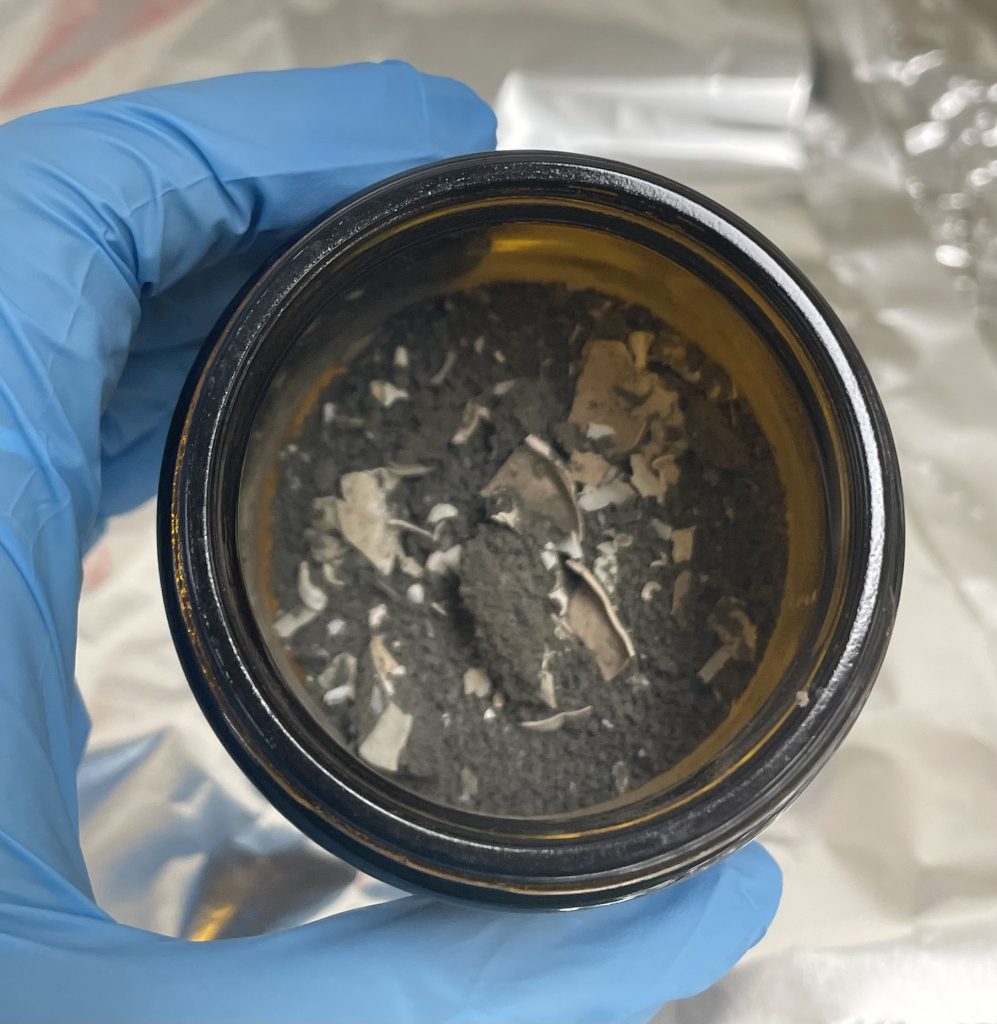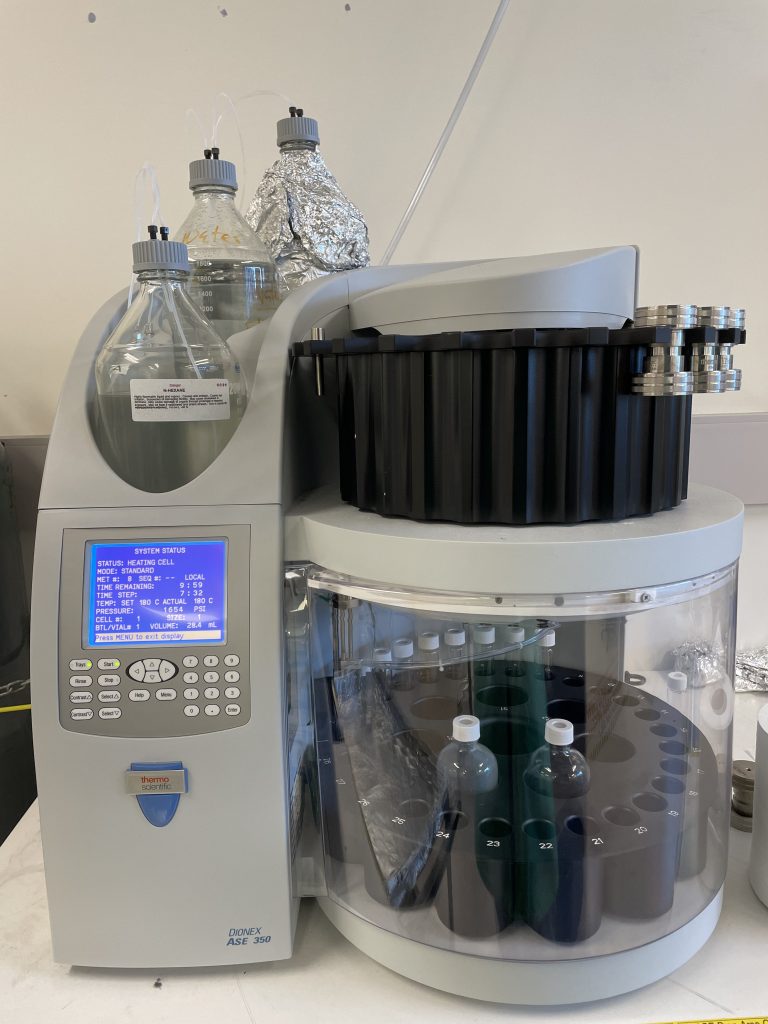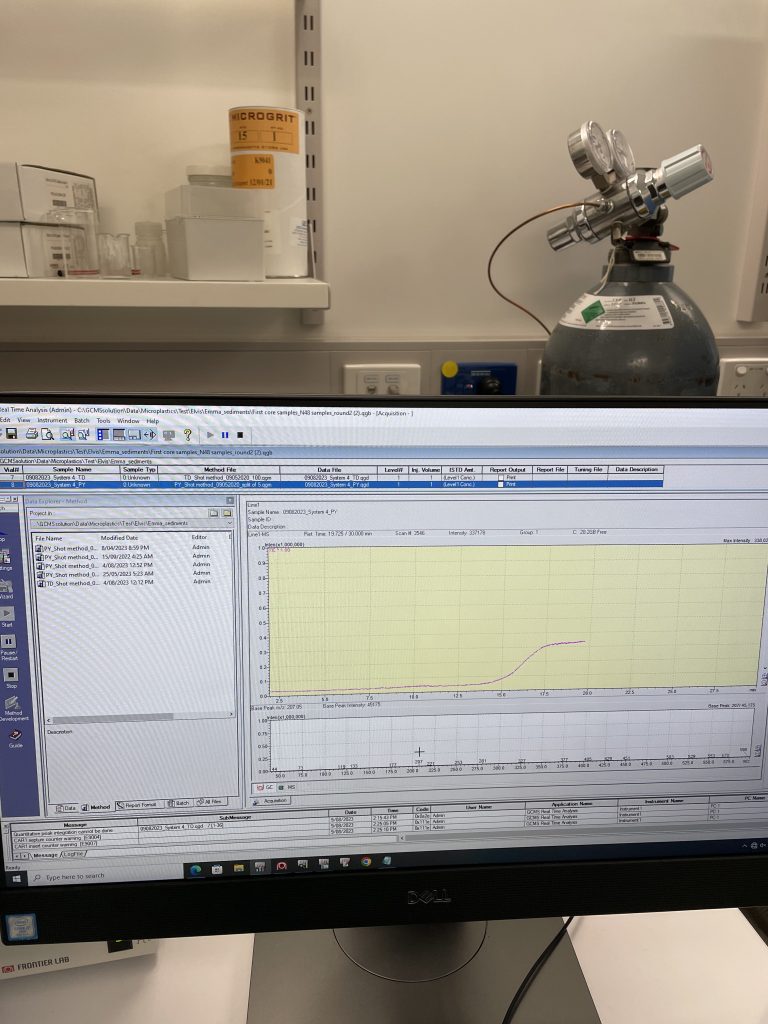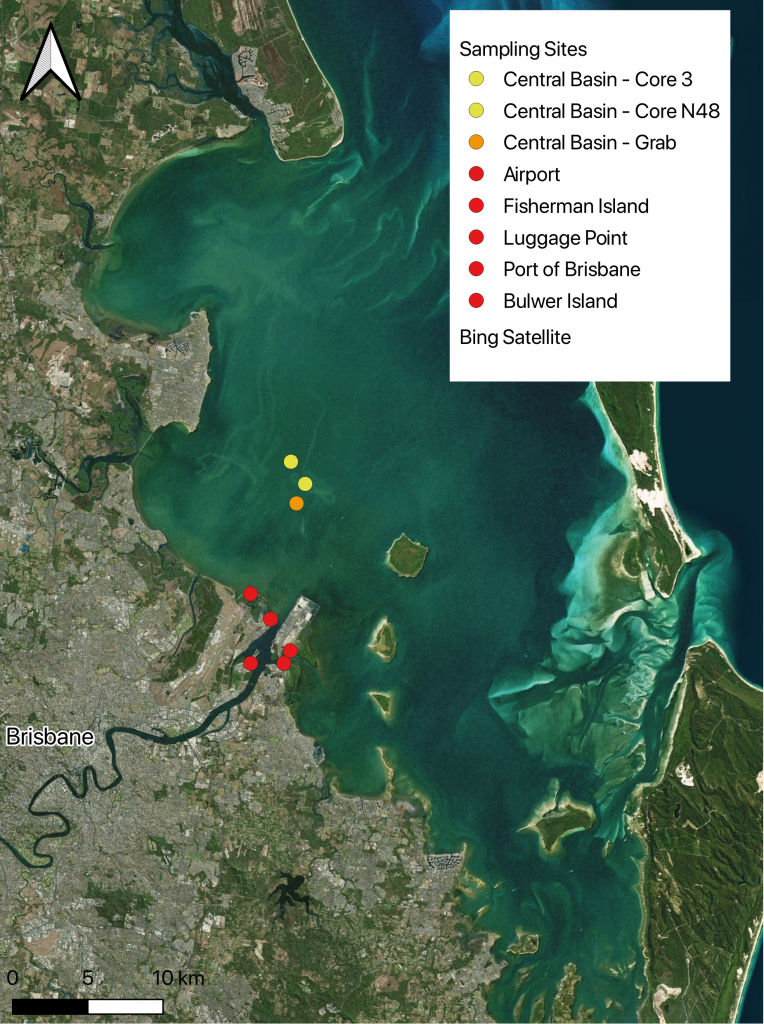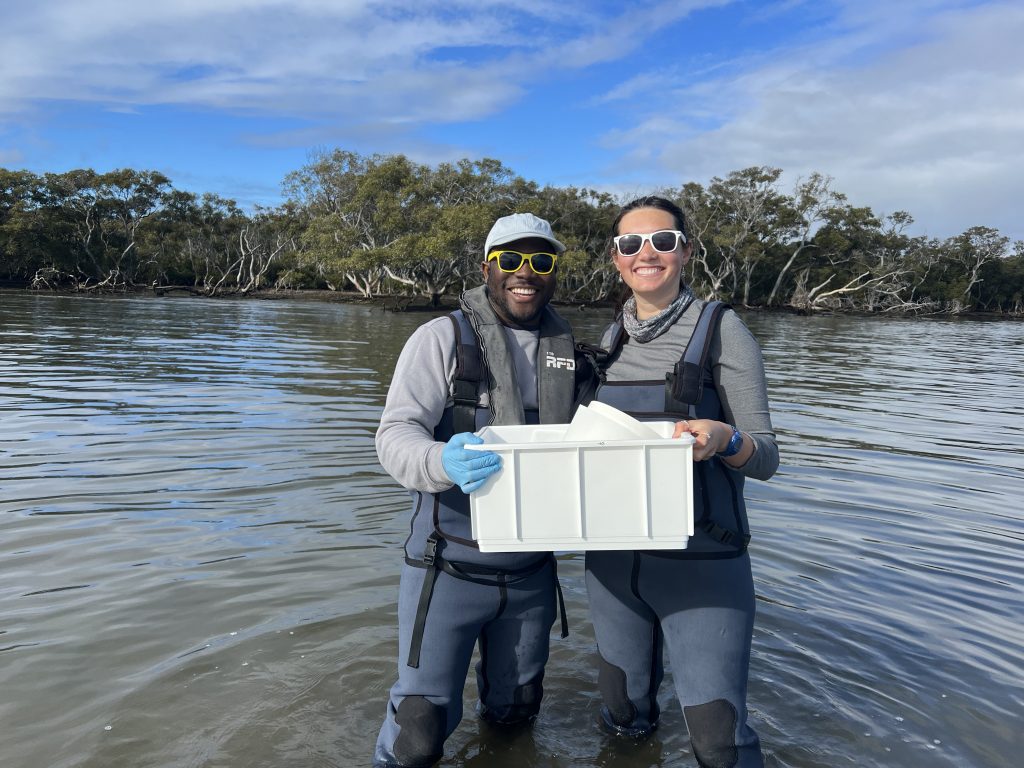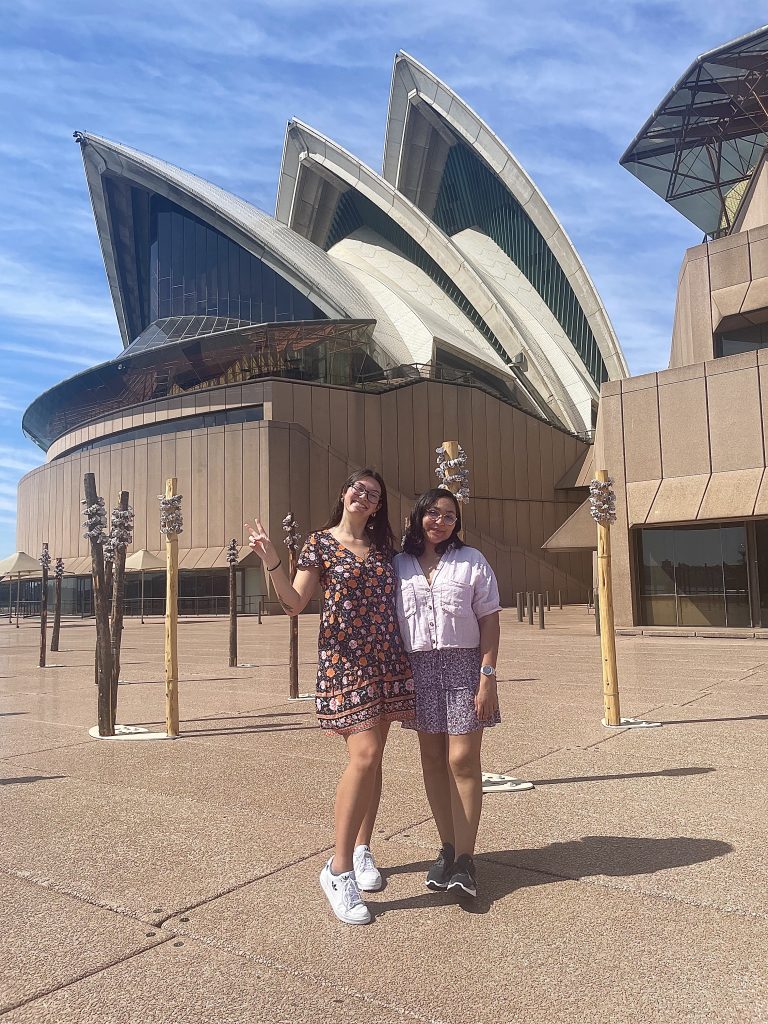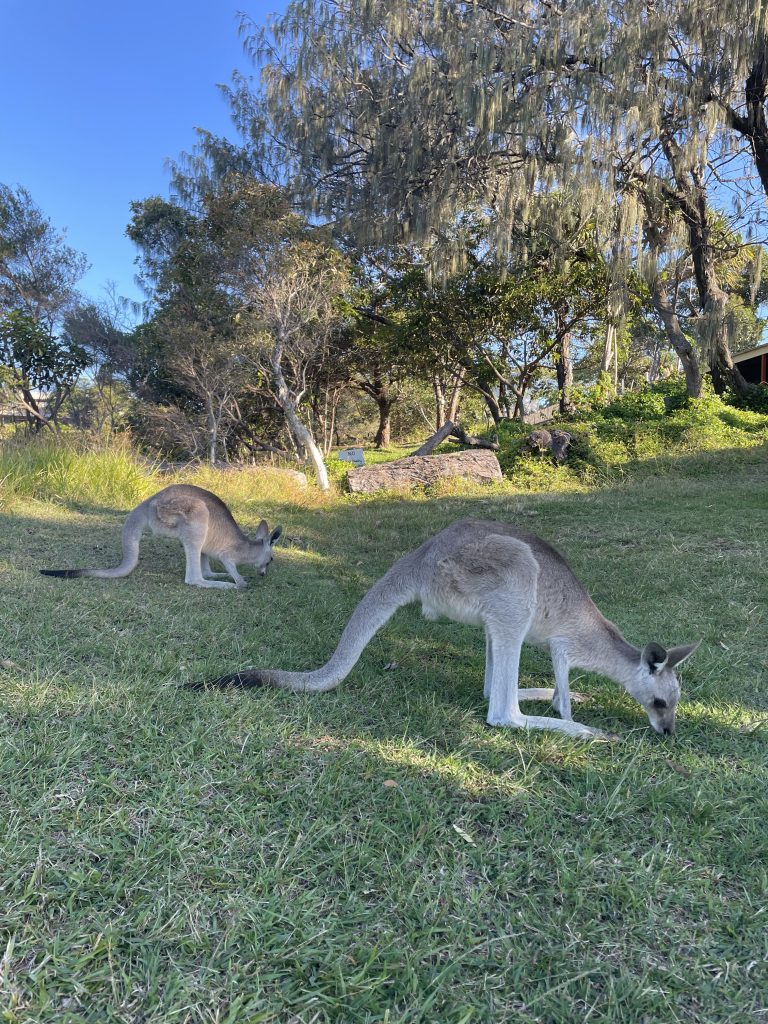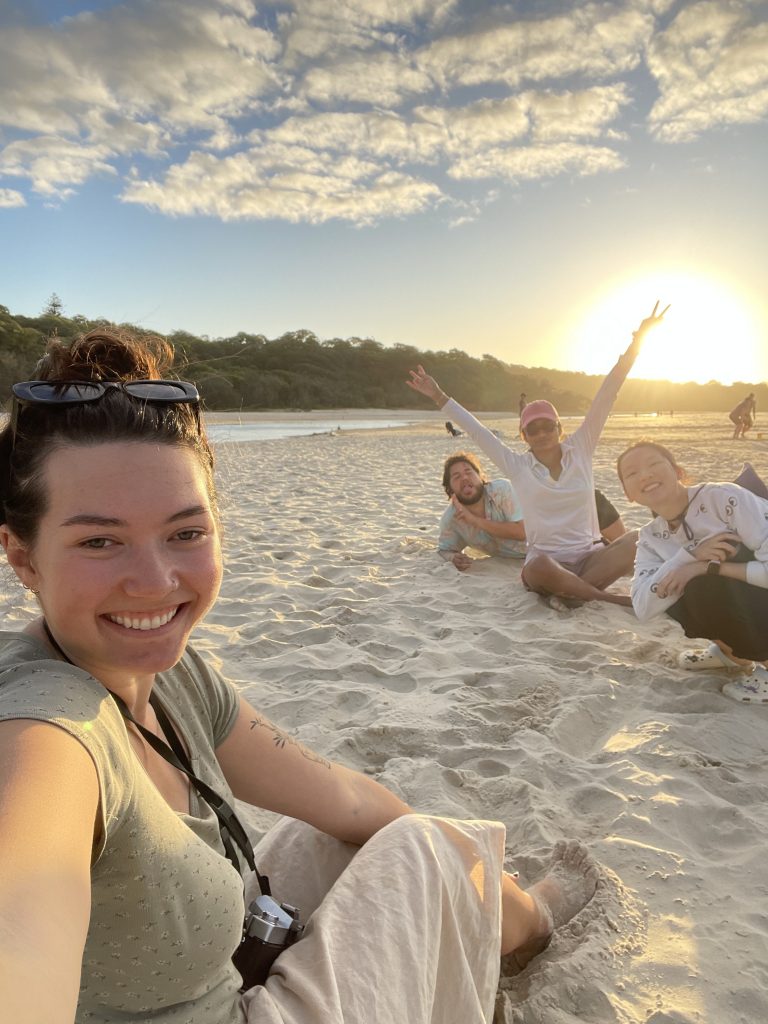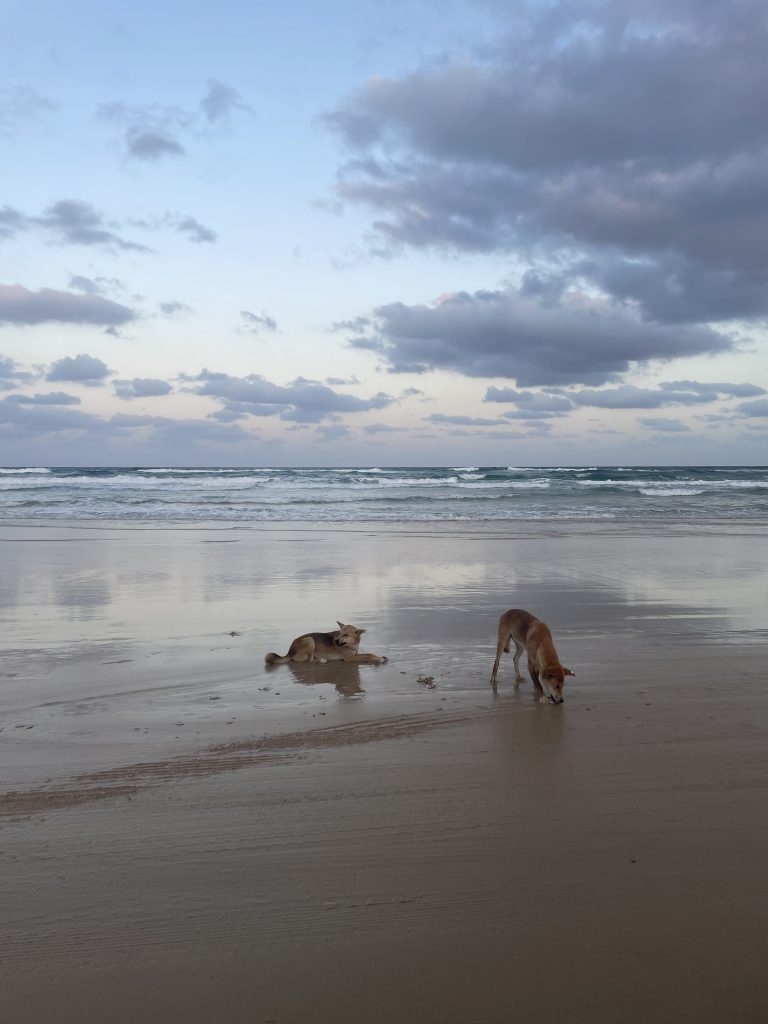In this blogpost, Emma Yenney talks about her interesting journey from Germany to Australia in pursuit of understanding plastic contamination in mangrove ecosystems. Her quest led her to the University of Queensland’s – Queensland Alliance for Environmental Health Sciences (QAEHS), where she joined Professor Kevin Thomas and his lab. The post details her experiences, including securing a scholarship, navigating the rental market, and the rigorous process of conducting fieldwork and lab analysis. Ultimately, the post underscores the transformative power of international research experiences and the opportunities for personal and academic growth that can arise from venturing beyond one’s home.
Preparation for Australia
“When I initially started planning my thesis, I knew that I wanted the focus to be on plastic contamination in mangrove forests. Since there are no mangroves in Germany, I looked abroad for institutes that studied plastics in areas where mangroves grew. I came across Professor Kevin Thomas’s lab at the University of Queensland’s (UQ) – Queensland Alliance for Environmental Health Sciences (QAEHS). Their lab has developed novel techniques for extracting plastic from different matrices (Figure 1) using dichloromethane-facilitated pressurized liquid extraction (PLE; Figure 2) and analysis utilizing pyrolysis gas chromatography-mass spectrometry (Pyr-GC/MS; Figure 3) producing a mass-based concentration opposed to traditional particle-based approaches. Additionally, Moreton Bay, located east of Brisbane, is lined with mangrove forests that intercept the tributaries before they reach the ocean. I emailed Prof. Thomas about my ideas for my thesis, and he introduced me to Dr. Elvis Okoffo, the Postdoc at QAEHS who developed these methods for plastics. From there on, the onboarding process with UQ was quite simple, and I applied for the DAAD PROMOS scholarship. After I was granted the scholarship, I applied for my visa and booked my flight to Brisbane. I initially stayed in an Airbnb for a week until I found a shared flat near QAEHS. Finding a flat was not easy as the rental market in Brisbane is very competitive, but I managed to find a great place with two roommates for A$ 200/wk. Lastly, I took out travel insurance and set up a phone plan.
Results of my stay
The first two months of my stay were devoted to a literature review, planning the structure of my thesis, and planning out my field sampling (Figure 4 ). I decided that my thesis would be three parts: vertical distribution of plastics in sediment cores, spatial distribution in the mangroves, and lastly an ecological risk assessment (ERA) using available literature. The start of my lab work began in July when I visited the UQ Long Pocket sediment archive where I collected sediment core samples for analysis (Figure 5 ). In August, Dr. Okoffo and Prof. Alistair Grinham from UQ’s School of Civil Engineering accompanied me on a trip to Moreton Bay where I collected grab samples from five different mangrove sites around the port (Figure 6 ). At each sampling location sediment was removed from the seaward, transition, and landward zones of the mangroves to assess the trapping ability of the root systems. From September to October, I extracted my samples using PLE and began to analyze them with Pyr-GC/MS. I finished my last round of sample analysis in November. Since I am finished with my lab work, the remaining time will be spent writing my thesis for submission in January 2024.
Final thesis
I would say this study abroad experience has been fundamental to my thesis work. Without coming to Australia, I would not have been able to use these novel methodologies or study this interesting and unique site. The work I have done here is extremely relevant to the field of microplastics, and it was a great networking opportunity. It was a great chance to use skills I learned in my master’s program such as sampling methods, GIS, R, ERA modelling, and academic writing to produce one last piece of work for my Masters degree.
Support at UQ
QAEHS is comprised of nine theme leaders, 14 research fellows, 41 PhD(c) students, and 20 research support staff. If I had any type of question from research planning and writing to instrumentation and data analysis, there were several people I could turn to. During my stay, I was able to sit in on weekly seminars, attend events such as 3MT, QAEHS’s annual research retreat, workshops, and writing groups, and receive proper instrument training. There was a biweekly QAEHS group meeting where updates on grants, publications, and lab upkeep were discussed. Additionally, the plastics group would meet fortnightly, and we would take turns updating each other on our research developments. During this meeting, we also had quarterly mini-symposiums where all students would give 10-minute presentations on their work. I also got a unique first-hand look into the reality of doing a PhD and continuing with academia, from postdocs to tenured professors. I have found QAEHS to be one of the most supportive, well-operating laboratories I have worked in and there were multiple opportunities to learn new things.
Websites
Visa (Temporary research activity visa 408): https://immi.homeaffairs.gov.au/visas
Housing: https://flatmates.com.au
Insurance: https://www.nib.com.au/member-account/overseas-working-visitors
Takeaway
Overall, I had a great time with QAEHS. I was able to network with researchers undertaking very interesting and progressive projects. I learned a great deal about writing publications, analytical instruments, and plastics in general. I also made many friends and was able to explore Australia (Figure 7 and 10). The Queensland region is amazing for hiking, swimming, wildlife spotting, and sunsets (Figure 8, 9 and 11). If you are considering research abroad, I highly recommend looking into UQ.”
Here are some beautiful glimpses from Emma’s AMEO:-
